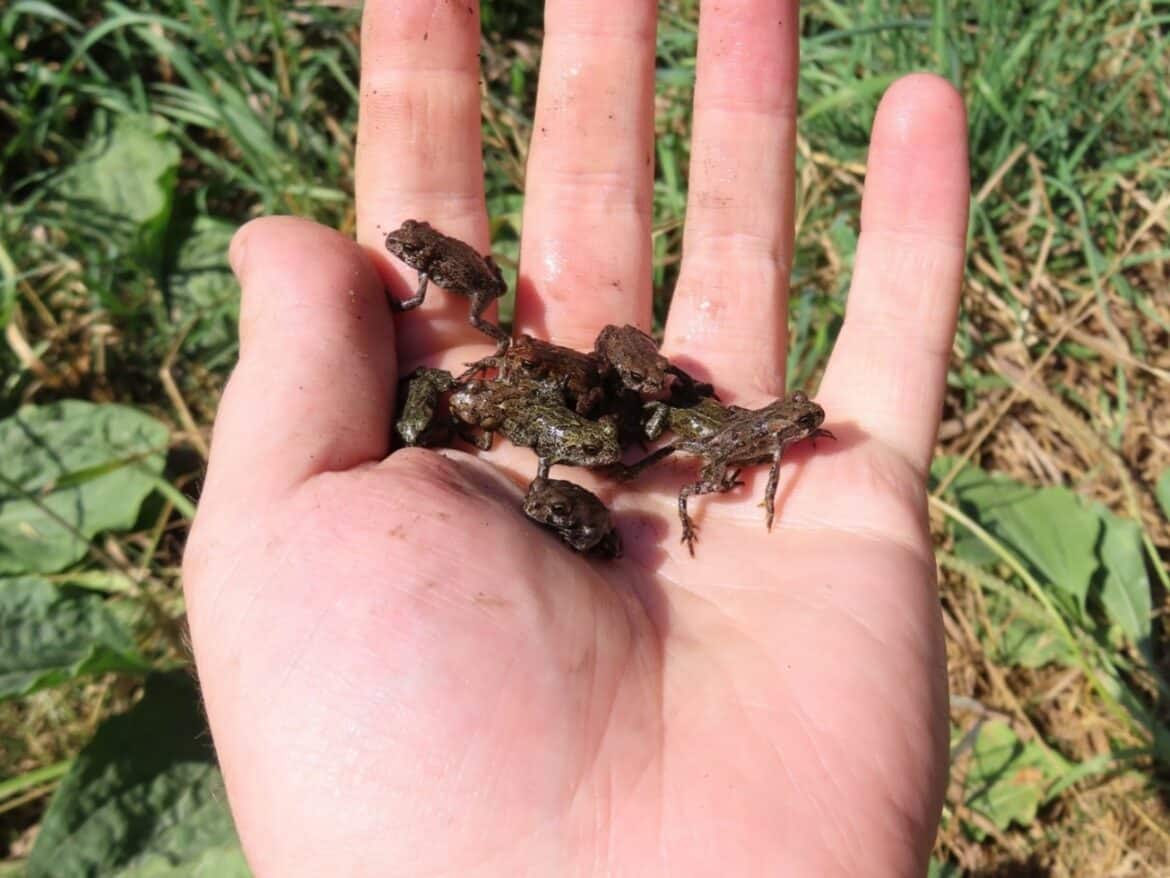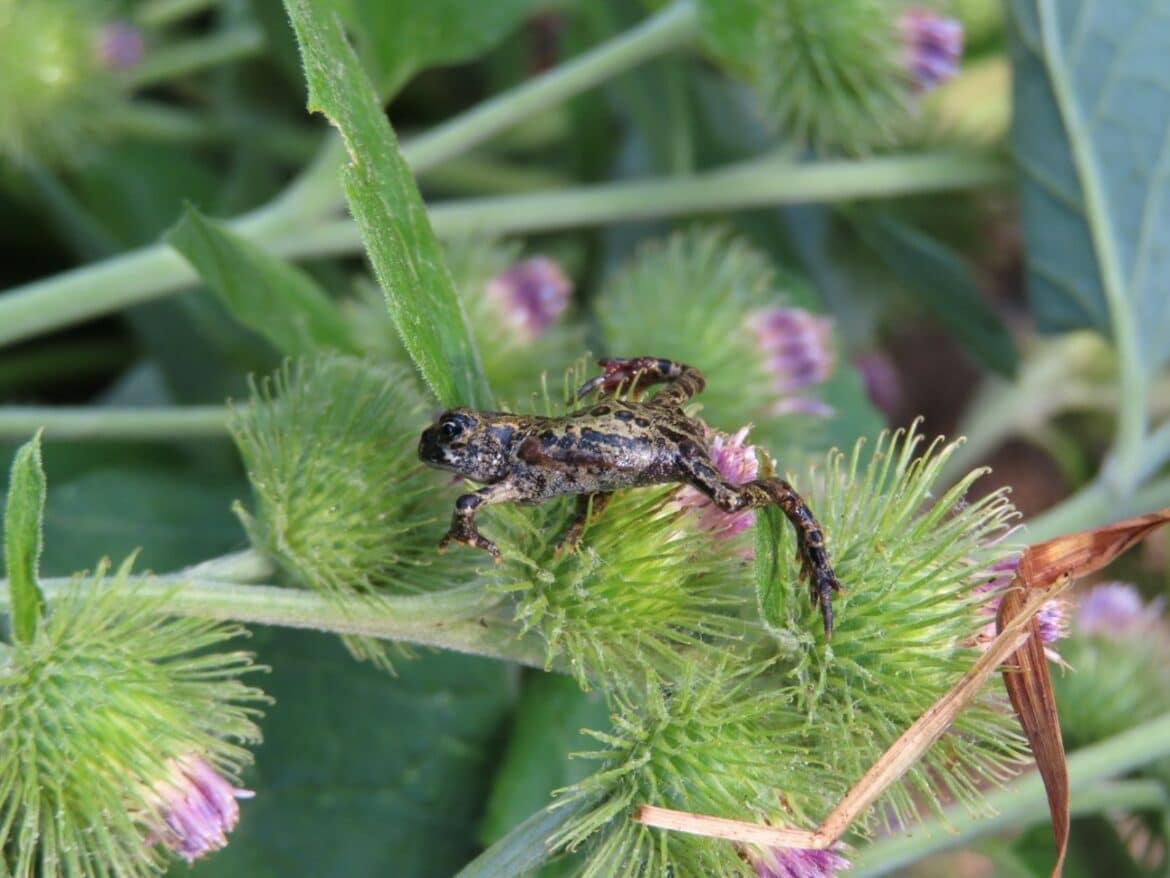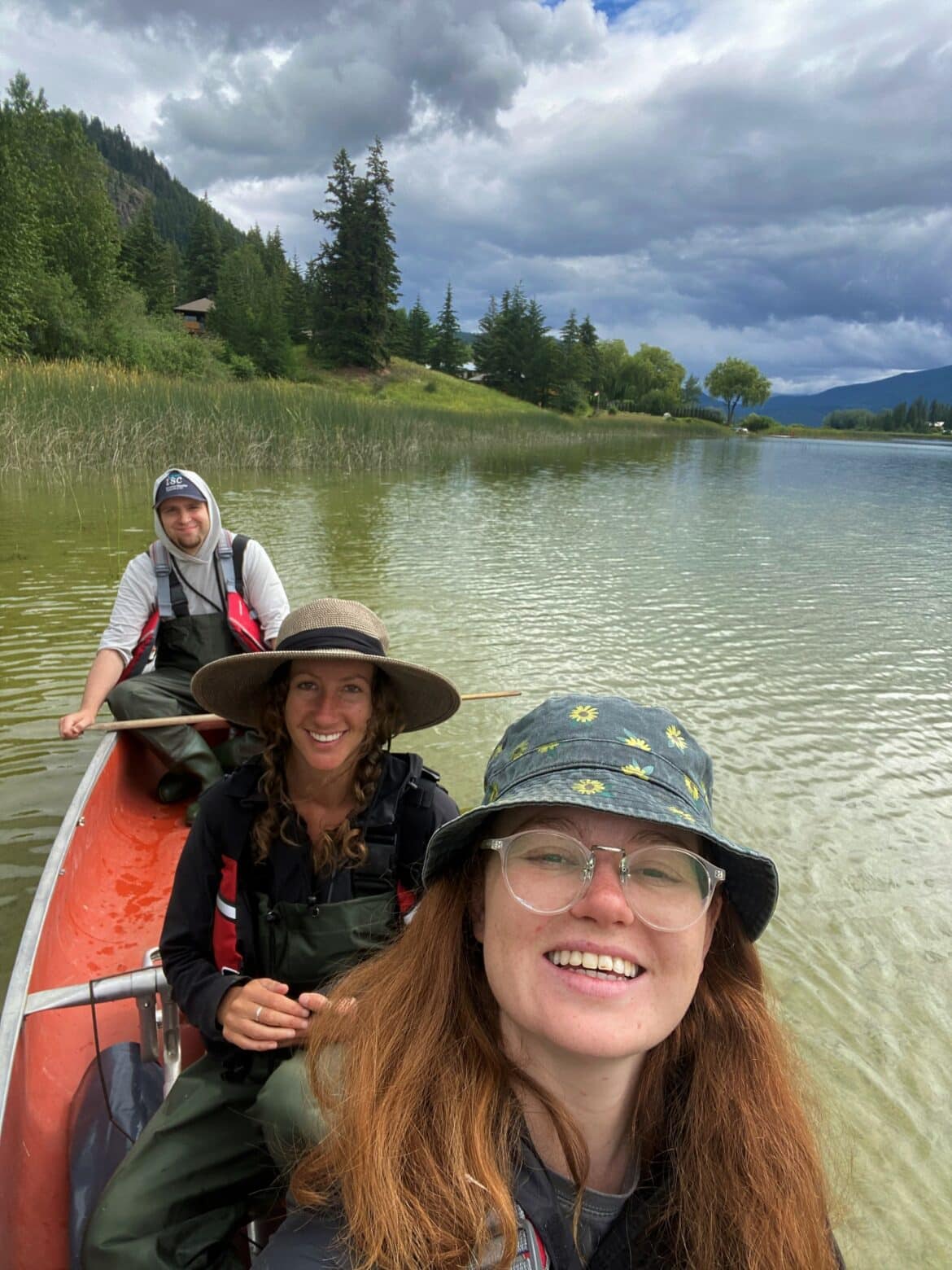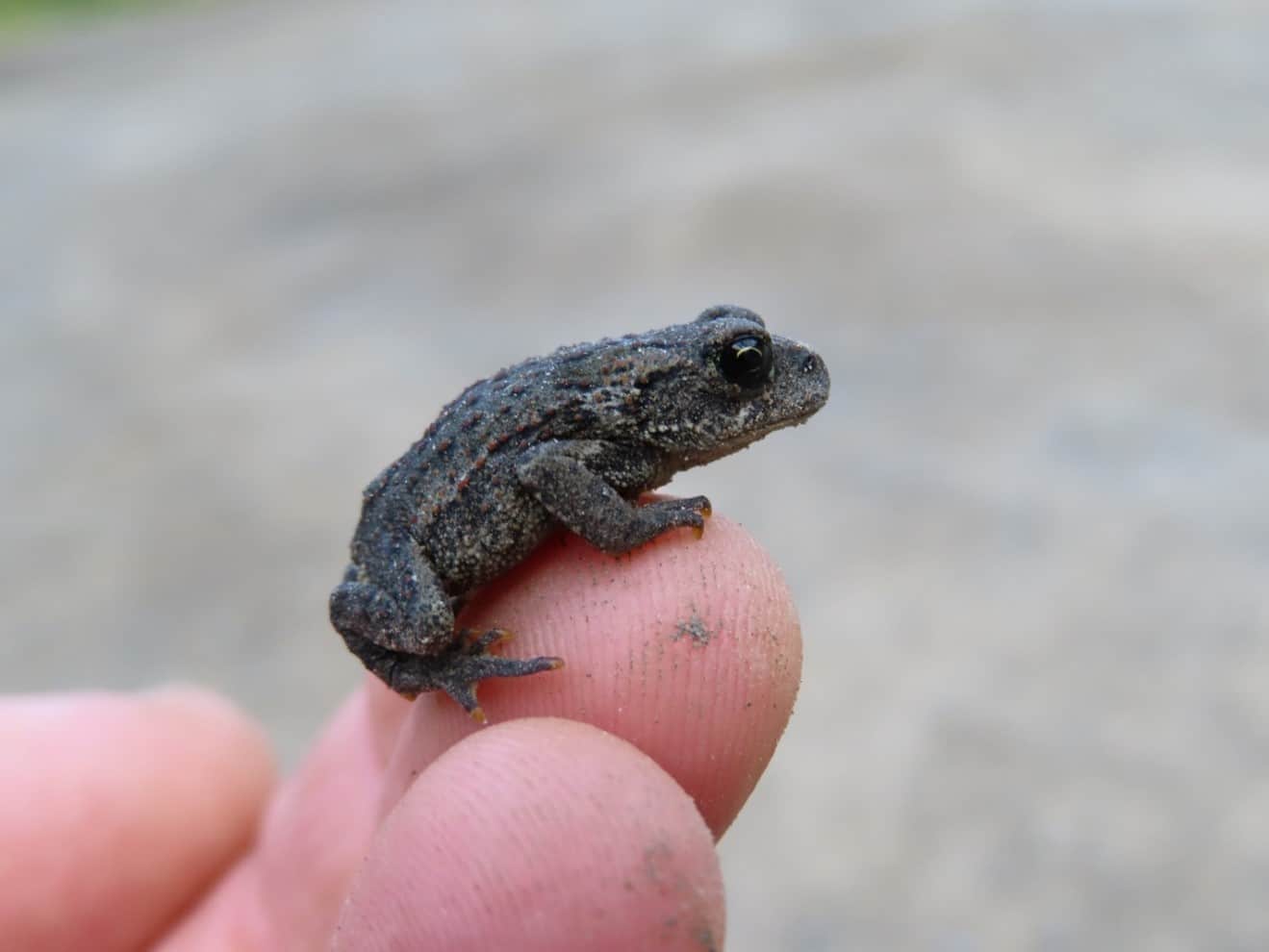By Justin DeMerchant, Lara Phillips, and April Blumberg, ISCBC’s Salmon Arm Action Team | November 18, 2022
Toads do a lot for us – from helping control the mosquito population to eating pests afflicting agriculture crops. Sometimes they need our help too.
In the spring, adult Western toads (Anaxyrus boreas) migrate to breeding ponds where they congregate in large numbers. Each female is capable of laying thousands of eggs. When the eggs hatch, the pond fills with huge schools of tadpoles. After the tadpoles metamorphose into toadlets, they emerge from the water in masses to seek terrestrial habitat. A few years later, the adult toads return to the same pond to breed. Although native Western toads are common in BC, some populations – specifically in the southwestern part of the province – have seen declines. Amphibians are especially susceptible to threats from our rapidly changing industrialized world. Habitat destruction is likely the number one threat to Western toads. Currently in BC, Western toads are considered a species of conservation concern.

On August 23, 2022, while manually treating a dense infestation of invasive Burdock (Arctium minus) at the Joyce Lake Rec Site near Falkland, the Salmon Arm Action Team came across hundreds of little Western toads. The team was surprised to be at the rec site at the same time toads were emerging from the water after transforming from tadpoles. Earlier in the morning, toadlets were gathered around the shore of the lake in the riparian zone. When it started to rain later in the afternoon, the toads came out to the gravel parking lot where the team was clipping back and bagging the Burdock plants.

We had to use extreme caution to not step on any of the little toads while we were working. The toadlets were suddenly everywhere we looked! We were shocked to find one of the toadlets stuck on a Burdock plant but luckily, we were able to successfully free it. It was an eye-opening, firsthand experience of how these sticky burrs can be a threat to all kinds of little creatures, when they get caught up and are unable to free themselves. Although we already understand the value of invasive species removal in our day-to-day work, this interaction between the Burdock and the toadlet specifically demonstrated the importance of clipping back Burdock.

The team removed most of the Burdock plants from the area to clear the way for the toads. Revisiting the site a couple weeks later, only a few toads remained. The team clipped the rest of the Burdock, hoping to help the toads in the years to come when they return to the lake to breed.
You can view more observations from the Salmon Arm Action Team here.
Lara Phillips is a Special Projects Lead at ISCBC. An avid trail runner and backcountry enthusiast, she feels most at home amongst nature and cares deeply about protecting BC’s diverse ecosystems. You can reach Lara at lphillips@bcinvasives.ca.
Share


















